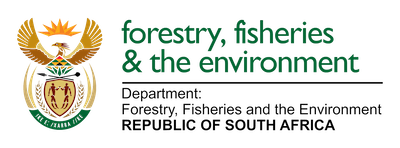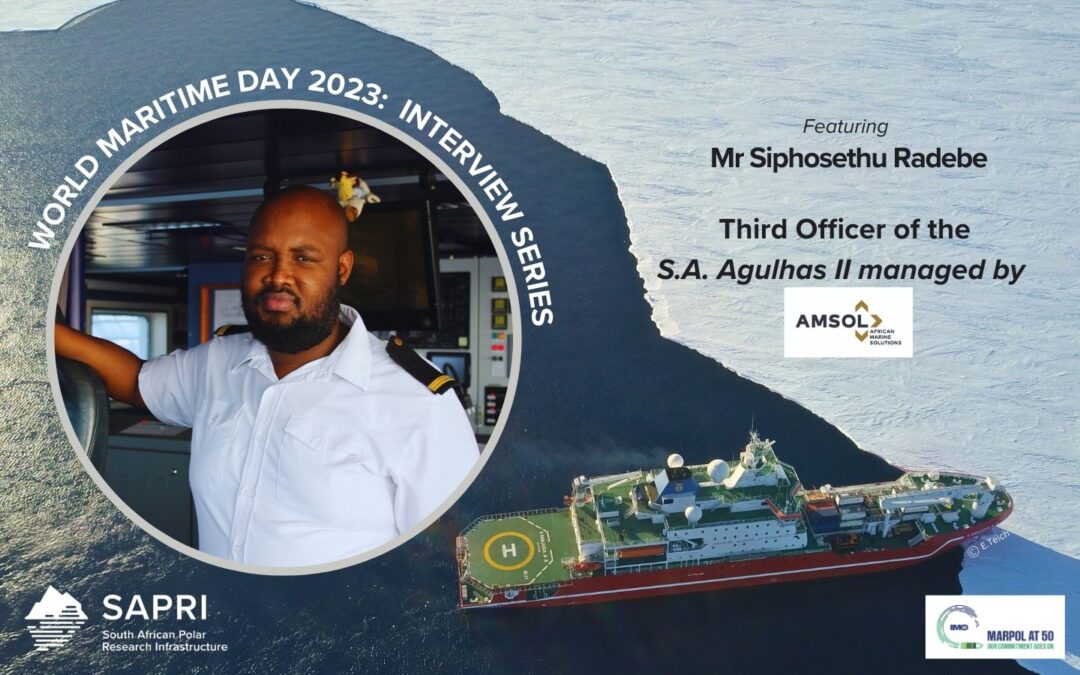
by Rabia Mathakutha | Sep 21, 2023 | Antarctica, Commemorative Days, Environment, International Days, SA Agulhas II, SA Polar Infratsructure, SA Polar Research Infrastructure, SANAP, SAPolarRI, SAPRI, Uncategorised
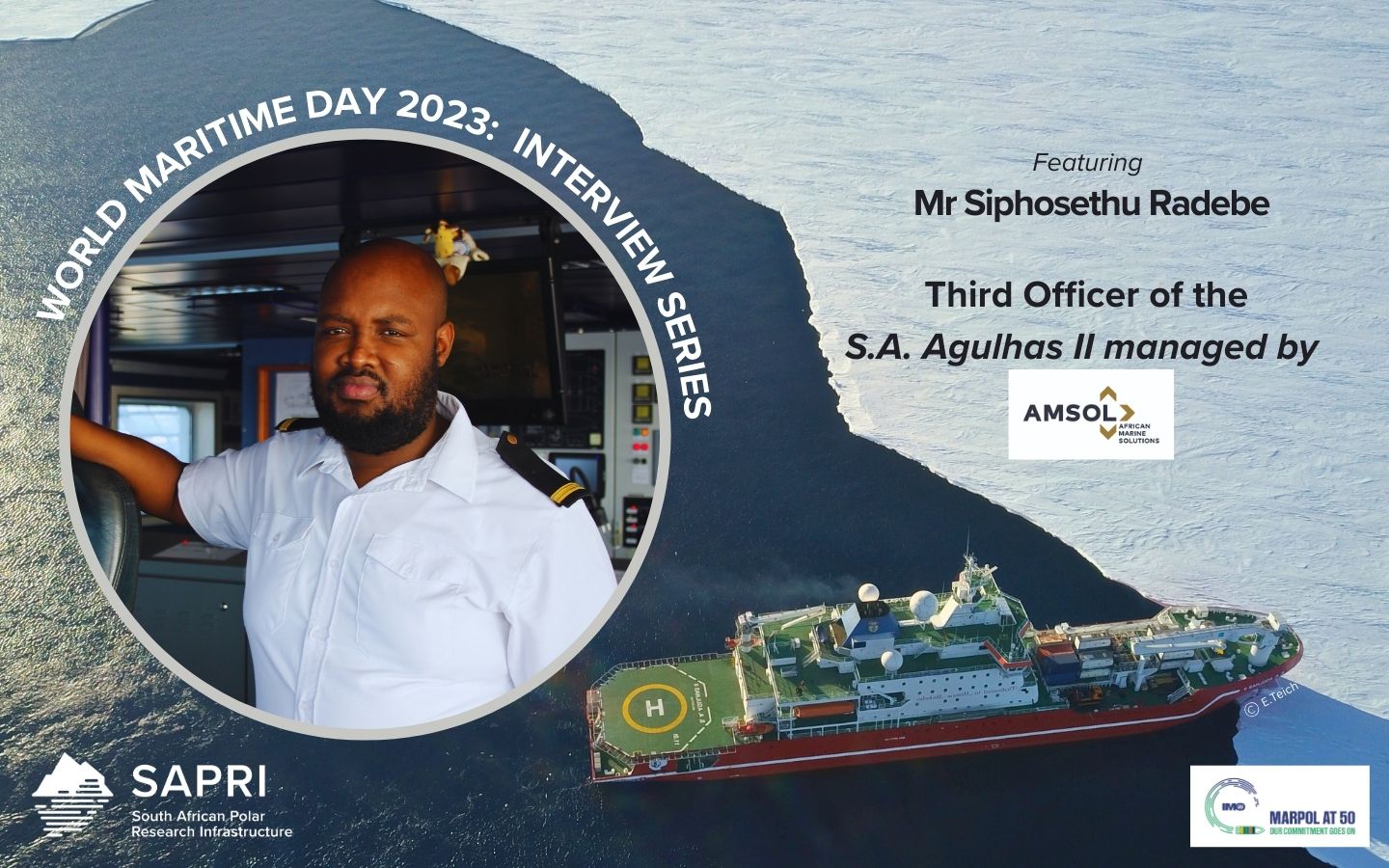
The Maritime Interview Series, leading up to World Maritime Day on September 28, 2023, aims to better acquaint us with and honour the seafarers on board the S.A. Agulhas II.
Did you miss Part 1? Click here.
The maritime industry connects countries, facilitates economic growth, enables scientific and research expeditions and plays a vital role in our everyday lives. However, the success of this enormous industry would not be possible without the men and women who sacrifice their time on land to serve our maritime needs.
The Maritime Interview Series Part 2 features Mr Siphosethu Radebe, Third Officer of the S.A. Agulhas II.
What does the Third Officer do on the ship?
The Third Officer, also referred to as the Third Mate, holds the position of a certified Officer In Charge of Navigational Watch (OICNW) and serves as an officer under the Second Mate. The Third Officer’s role encompasses a range of crucial duties, from navigational supervision to safety inspections and crew training. When assuming the navigational watch, as the Third Officer, I take charge of the bridge team, oversee the vessel’s maneuvering to maintain safety and course accuracy. The primary responsibility of the Third Officer revolves around ensuring safety on board. This includes conducting thorough inspections of gear lockers, lifeboats, and all equipment, verifying their proper functioning and adherence to safety standards, and overseeing emergency drills. Additionally, as the Third Officer, I play a pivotal role in directing line handlers, supervising cargo watches, managing anchor details, and providing training and guidance to crew members.
Mr Radebe’s Background and Journey into a Seafarer Career
I hale from Durban, KwaZulu-Natal and recently joined the S.A. Agulhas II with the vessel managing agent, African Marine Solutions (AMSOL). I obtained my National Diploma in Nautical Studies (previously referred to as Maritime Studies) from the Durban University of Technology (DUT), including in-service training with AMSOL, qualifying me as a maritime officer. I’m a SAMSA (South African Maritime Safety Authority) accredited officer after completing several short courses related to health and safety as part of the “Standards of Training and Certification of Watchkeeping” (STCW), as determined by the IMO. My experience as a seafarer extends beyond working on the S.A. Agulhas II, and includes experience on the vessel NOMASA (a Tug that was built in 2006, sailing under the flag of South Africa along the African west coast) and the Fire Fighting Vessel SIYANDA (built in 2010, also sailing under the flag of South Africa). My training included shadowing the First Officer on the S.A. Agulhas II.
What are some of the challenges that you experience in your line of work?
The long working hours and being away from home are challenging. However, this is often compensated by the decent break we receive after finishing a voyage, usually equating to approximately two months at sea and two months at home.
Any advice to someone who would like to pursue this career?
My best advice to anyone interested in pursuing a career in maritime is to work hard in school and be a top archiver, especially in the STEM disciplines (Science, Technology, Engineering, and Mathematics).
Part 3 will be shared on 22 September 2023.
Photo Credit: Rabia Mathakutha (South African Polar Research Infrastructure) and Eduan Teich via the Antarctic Legacy of South Africa (ALSA) Archive.
Written by: Rabia Mathakutha, South African Polar Research Infrastructure, 21 September 2023
Edited by: Anche Louw (South African Polar Research Infrastructure) and Ria Olivier (Antarctic Legacy of South Africa)
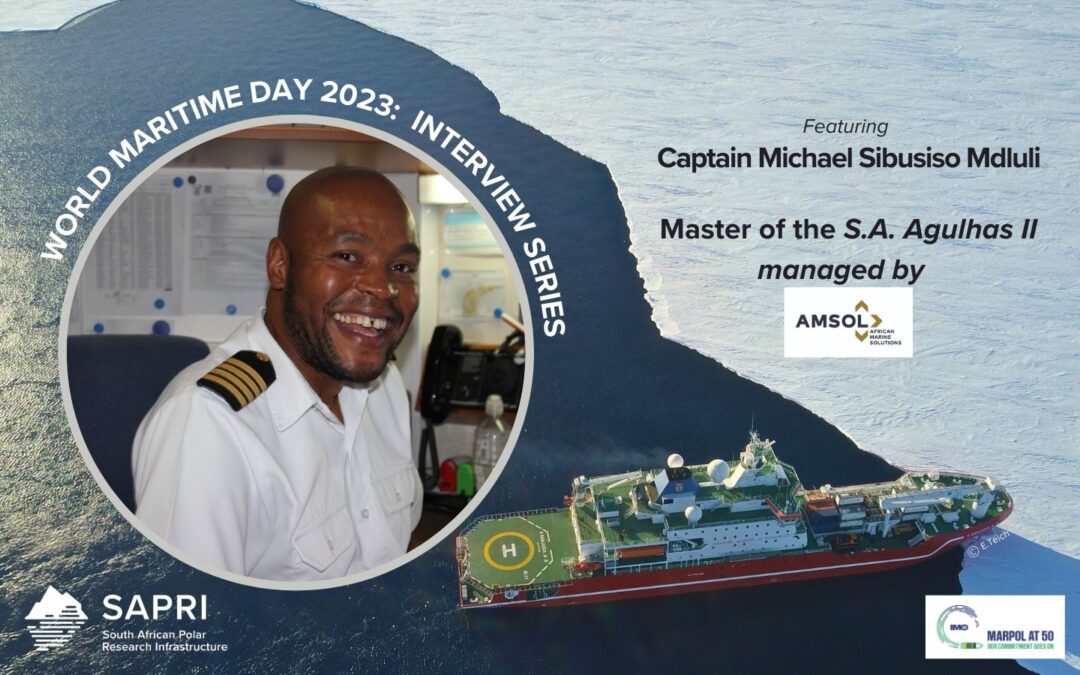
by Rabia Mathakutha | Sep 20, 2023 | Antarctica, Commemorative Days, Environment, International Days, SA Agulhas II, SA Polar Infratsructure, SA Polar Research Infrastructure, SANAP, SAPolarRI, SAPRI, Uncategorised
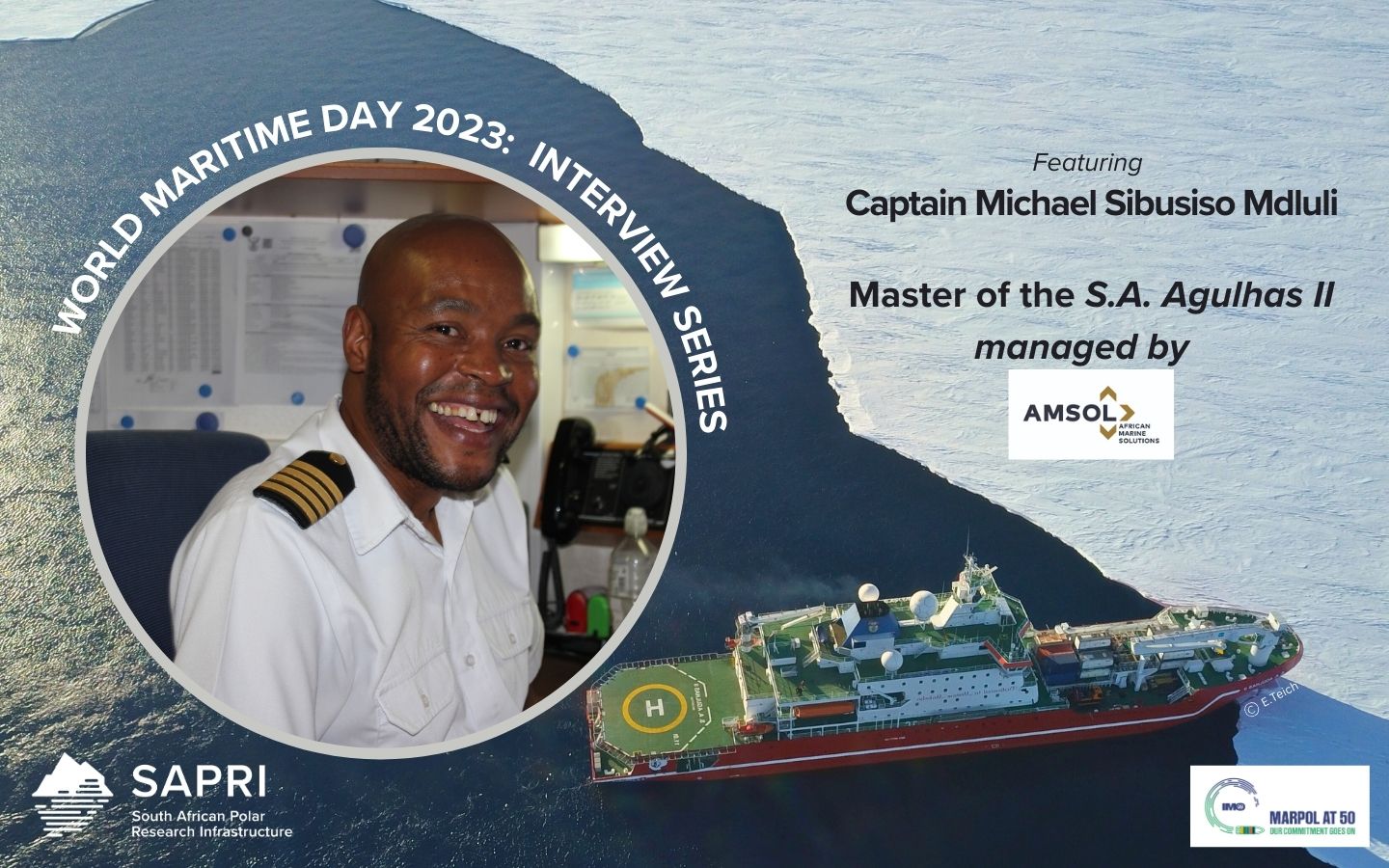
Leading up to World Maritime Day 2023
Every year on the last Thursday of September, nations around the world come together to celebrate World Maritime Day. This international observance aims to highlight the crucial role that shipping and seafaring play in our global economy and emphasise the importance of sustainable maritime practices. World Maritime Day provides an opportunity to raise awareness about the challenges faced by the maritime industry and to promote international cooperation in addressing them.
According to the International Maritime Organisation (IMO), This year’s World Maritime theme is “MARPOL at 50 – Our commitment goes on”. The theme spotlights the International Convention for the Prevention of Pollution from Ships (MARPOL), which covers the prevention of pollution of the marine environment by ships from operational or accidental causes.
Acknowledging the Role of South African Seafarers in the Maritime Industry
The maritime industry is the backbone of global trade. This industry connects countries, facilitates economic growth, enables scientific and research expeditions and plays a vital role in our everyday lives. However, the success of this enormous industry would not be possible without the men and women who sacrifice their time on land to serve our maritime needs. In recognising this, the South African National Antarctic Programme (SANAP) and the South African Polar Research Infrastructure (SAPRI), would like to honour some of our local seafarers working on board the South African research and supply vessel, the S.A. Agulhas II during various marine and Antarctic research related expeditions through the Southern, Indian and Atlantic Oceans. We would like to honour these seafarers in The Maritime Interview Series, leading up to World Maritime Day, on Thursday, 28 September 2023.
The Maritime Interview Series Part 1 features Captain Michael Sibusiso Mdluli, Master of the S.A. Agulhas II.
What is the Captain’s role on the ship?
“As the captain (also known as the Master), I hold the highest-ranking position on the vessel and I’m responsible for various critical tasks. I oversee the navigation, operations and safety of the S.A. Agulhas II, including managing and leading the crew. I have to ensure compliance with regulations and laws, oversee the vessel maintenance and administration, and handle commercial and legal responsibilities. My primary focus is thus on maintaining the safety, efficiency, and overall well-being of the vessel, crew, and cargo throughout its operations”.
Captain Mdluli’s Background and Journey into a Seafarer Career
Captain Mdluli grew up in a small village of Kwathunyana, which is 50 km south of Durban, and currently resides in Kloof, Durban. From humble beginnings as a Third Officer to obtaining the internationally recognised Master’s Certificate of Competency (Unlimited) in 2012, Captain Mdluli has been a seafarer for over 20 years. He has worked as a Master on several cargo vessels before joining the S.A. Agulhas II in 2016, and maintains that his experience on a research vessel such as the S.A. Agulhas II is both challenging and enjoyable. Some of the new and exciting experiences he mentioned about commanding the S.A. Agulhas II were learning how to navigate sea ice, a critical role during SANAE IV expeditions to Antarctica, as well as working with and learning from the scientists and researchers aboard the S.A. Agulhas II during research expeditions.
Captain Mdluli holds a Master’s Certificate of Competency (Unlimited), which makes him qualified to command a vessel of any size in the world’s oceans.
What do you like the most about your job?
“I enjoy travelling, seeing new places, meeting and interacting with different people, and learning from others. I also enjoy sharing my knowledge with others and empowering and inspiring the youth of South Africa”. To this, Captain Mdluli spoke about his involvement in school outreach programmes, where he visits local high schools in KwaZulu-Natal to share his knowledge and experiences as a seafarer.
What are some of the challenges that you experience in your line of work?
“Being away from loved ones and sometimes the long working hours that come with being a captain and overseeing everything and everyone”. He mentioned that he often has to be the last man standing. Captain Mdluli expressed that as much as he enjoys working with people and sees the crew as part of his family and always strives to get to know his crew on a personal level, this also comes with the challenge of dealing with individual personal matters that he is not always equipped to. However, he mentioned that the vessel managing agent, African Marine Solutions (AMSOL), offers counselling for their staff, which helps provide support during long voyages at sea.
Away from home: See the S.A. Agulhas II voyage schedule here.
Advice from Captain Mdluli:
“The best advice I would give to anyone interested in pursuing a career in maritime or wants to become a ship captain one day, is to choose STEM subjects at school (i.e., Science, Technology, Engineering, and Mathematics). Furthermore, to work at sea, you must have a positive mindset and show resilience, and most importantly, you must have a passion for it. Therefore, when looking to pursue any career, talk to the people who’ve been there or doing something related, to find out if it’s right for you”.
World Maritime Day reminds us of the vital role that the maritime industry plays in our interconnected world. The maritime industry is also particularly crucial in enabling the science and research in the Antarctic region and Southern Ocean through SANAP. SANAP recognises the global and national importance of safeguarding the environment of the Antarctic and Southern Ocean and protecting the integrity of ecosystems, both marine and terrestrial, in the region.
As we navigate towards a more sustainable future, let us recognise the invaluable efforts of seafarers who continue to navigate the world’s oceans, connecting nations, and powering global trade, science and research.
Photo Credit: Rabia Mathakutha (South African Polar Research Infrastructure) and Eduan Teich via the Antarctic Legacy of South Africa (ALSA) Archive.
Written by: Rabia Mathakutha, South African Polar Research Infrastructure, 20 September 2023
Edited by: Anche Louw, South African Polar Research Infrastructure and Ria Olivier, Antarctic Legacy of South Africa

by Ria Olivier | Aug 23, 2023 | SANAP, SCAR, Uncategorised
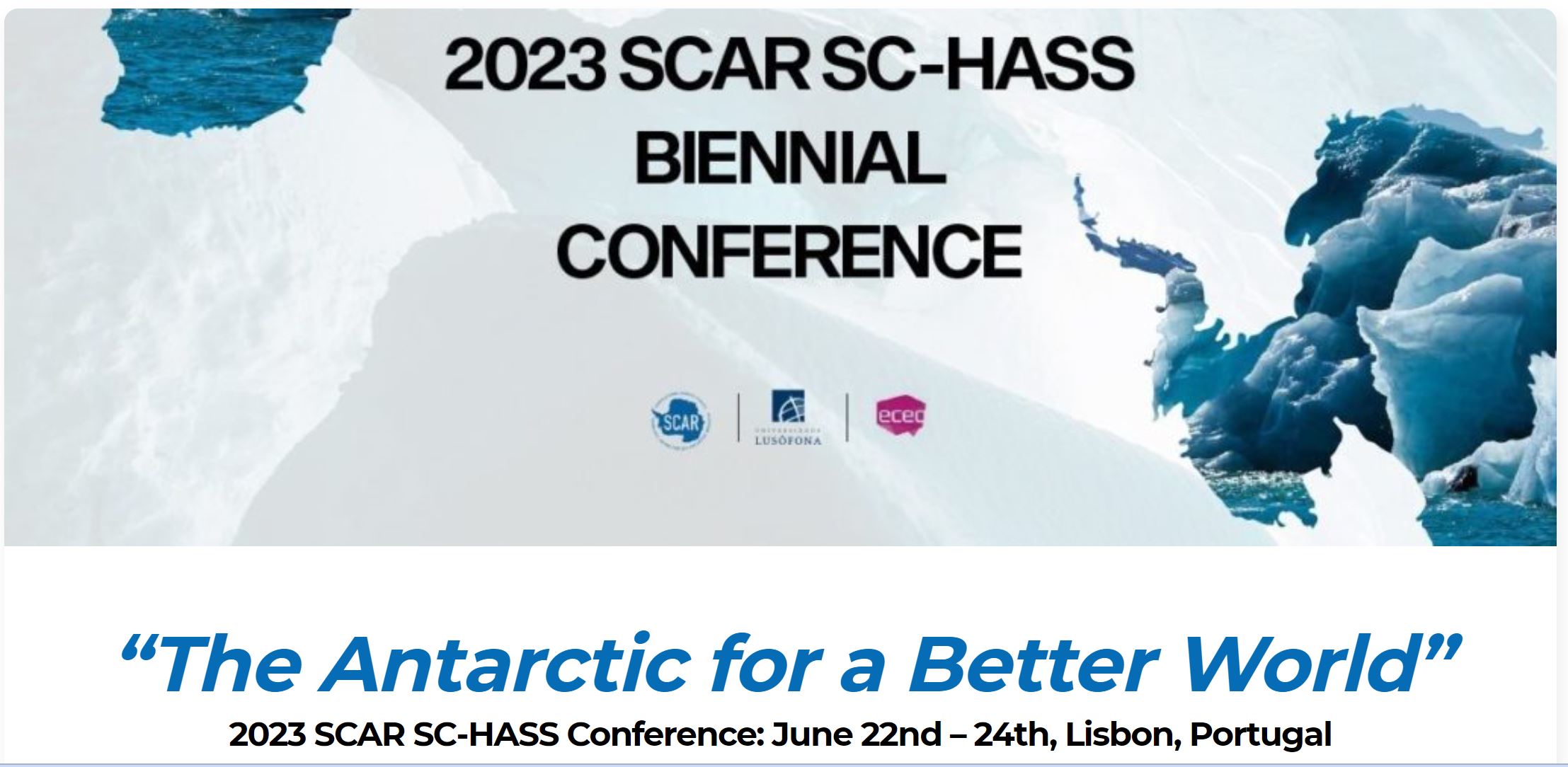
The 2023 SCAR SC-HASS Conference: with the theme: “The Antarctic for a Better World” hosted by Universidade Lusófona took place in June, Lisbon, Portugal. There were more than 150 participants from all over the world and were welcomed with a Portuguese delicacy Pasties de Nata. The annual business meeting of SCHASS took place at the end of the conference where it was announced that next conference will be a hybrid and in 2027 the SCHASS conference will be in-person.
This year’s SC-HASS Conference was, as always, a wonderful experience. It was an honour to represent the newly established South African Polar Research Infrastructure, presenting on its prospects on connecting the society of South Africa with research of global interest, Marine and Antarctic research. Particularly valuable to me was the discussions and new connections made within the Public Engagement on Antarctic Research sessions we had during the conference and sharing ideas with communicators and researchers within various fields (social sciences, history, journalism, science communication, art, tourism), all with the focus on “science for the benefit of society”. I look forward continuing various discussions which initiated through this in-person conference – Anche Louw (Digital Marketing and Communications Manager of SAPRI, Co-Investigator of the Antarctic Legacy of South Africa project, a SA representative on the Standing Committee on Humanities and Social Sciences (SCHASS) at SCAR and on the SA National Committee for SCAR and a member of the action group for Public Engagement with Antarctic Research (PEAR) at SCAR).
It was wonderful to meet up in person again with the Antarctic HASS community, after the last in-person meeting in Ushuaia, Argentina, in 2019. Since then, many of us have met and collaborated online, but there is something special and productive about being able to interact face to face. The talks were diverse and informative, we received excellent feedback on our papers, and made numerous contacts for future collaborative research – Charne Lavery (Senior Lecturer in the Department of English at the University of Pretoria, Co-director of the Oceanic Humanities for the Global South project, a South African Humanities and Social Sciences delegate to the international Scientific Committee on Antarctic Research (SCAR) and PI on a South African National Research Foundation’s Antarctic Programme (SANAP) project: ‘Antarctica, Africa and the Arts’).
This was the best conference I have attended. Everyone was friendly and generous with their feedback. The conference was structured so that there was a tea or lunch after each session, facilitating continuing conversations outside of the presentation time. I thoroughly enjoyed it – Jean Brundrit (Teaches photography, researches and makes art in the Fine Art Department at the University of Cape Town).
I was delighted to participate in the Antarctic Hass conference this year. The range of intellectual interest I encountered there went well beyond the limits of my own literary investments in the region, and in ways that I found both productive and rewarding. I found the variety of approaches to how the Antarctic has and might be thought particularly interesting, and I was pleasantly surprised by how Antarctic Scholarship seems especially able to accommodate interdisciplinary modes of academic inquiry – Simon van Schalkwyk (Senior Lecturer in the Department of English Studies at the School for Literature Language and Media at the University of the Witwatersrand).
I’m new to this field and was a bit hesitant about presenting work that is still very much ‘in progress’ but am so glad that I did! The conference was an amazing opportunity to meet the Antarctic HASS community and to share ideas, contacts and resources – Adrienne van Eeden-Wharton (Postdoctoral fellow at the University of Pretoria on the Antarctica, Africa and the Arts project (NRF-SANAP funded project).
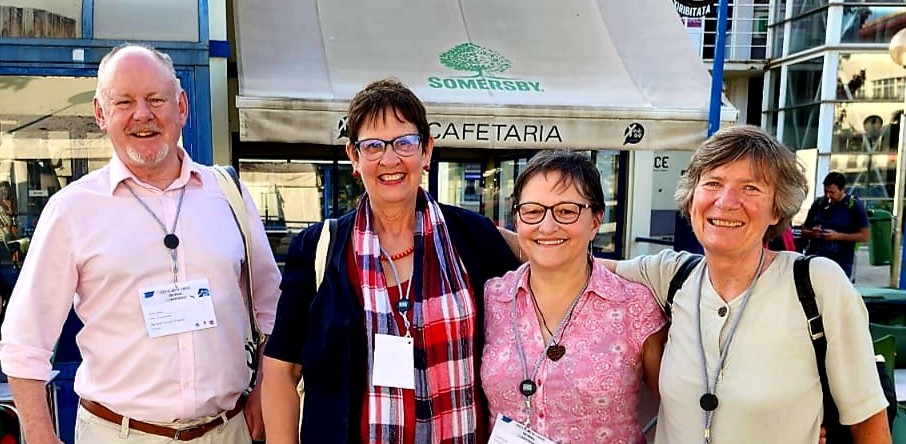 The COVID pandemic change the conference environment. Since the last SCHASS in 2019 in Argentina the Social Sciences and Humanities community had online meetings and discussions and activities within this discipline carried on. Attending an in-person meeting made me once again realise that we are human beings, and we need human contact. It was great to meet with colleagues that I have become friends over the past years, it felt like a family reunion. The great networking that takes place outside of the presentations cannot be substitute by online symposia and conferences. It is great to be part of this standing committee of SCAR and its activities. The chance to further data management in the social sciences and humanities is always important – Ria Olivier (Principal Investigator and digital archivist of Antarctic Legacy of South Africa (ALSA) based at Stellenbosch University, member and SA representative of Standing Committees on Humanities and Social Science in Antarctica (SCHASS) and Antarctic Data Management (SCADM), and on the SA National Committee for SCAR).
The COVID pandemic change the conference environment. Since the last SCHASS in 2019 in Argentina the Social Sciences and Humanities community had online meetings and discussions and activities within this discipline carried on. Attending an in-person meeting made me once again realise that we are human beings, and we need human contact. It was great to meet with colleagues that I have become friends over the past years, it felt like a family reunion. The great networking that takes place outside of the presentations cannot be substitute by online symposia and conferences. It is great to be part of this standing committee of SCAR and its activities. The chance to further data management in the social sciences and humanities is always important – Ria Olivier (Principal Investigator and digital archivist of Antarctic Legacy of South Africa (ALSA) based at Stellenbosch University, member and SA representative of Standing Committees on Humanities and Social Science in Antarctica (SCHASS) and Antarctic Data Management (SCADM), and on the SA National Committee for SCAR).
 Conference closing ceremony: a performance by a university student musical band. We thank the organisers that delegates part of the SA National Antarctic Programme could attend this conference.
Conference closing ceremony: a performance by a university student musical band. We thank the organisers that delegates part of the SA National Antarctic Programme could attend this conference.
Photo Credit: Pasties de Nata and Musical band – SCHASS
Ria Olivier, Antarctic Legacy of South Africa, 23 August 2023

by Rabia Mathakutha | Jun 19, 2023 | Antarctica, Current Event, Environment, Important Dates, International Days, Invasion Biology, Marion Island, Mice Eradication, Research, SANAP, SAPolarRI, SAPRI, Southern Ocean, sub-Antarctic, Uncategorised
On 19th of June, the world comes together to celebrate World Albatross Day, an annual event dedicated to raising awareness about these magnificent seabirds and the conservation challenges they face. World Albatross Day serves as a crucial platform to educate and inspire action to protect these iconic ocean wanderers. With their graceful flight and important ecological role, albatrosses deserve our attention and concerted efforts for their survival.
South Africa is a long-standing Party to the International Agreement on the Conservation of Albatrosses and Petrels (ACAP). The agreement was brought into existence on 1 February 2004. The day also falls on the date of the signing of the Agreement 22 years ago. ACAP has chosen the theme “Plastic Pollution” to mark the fourth World Albatross Day, to be celebrated on 19 June 2023. This follows the inaugural theme “Eradicating Island Pests” in 2020, “Ensuring Albatross-friendly Fisheries” in 2021, and “Climate Change” last year in 2022.
Albatrosses close to home
Multiple species of albatross are found across the Southern Ocean. This includes Antarctic, sub-Antarctic and subtropical waters. These albatrosses breed on sub-Antarctic and Antarctic islands including South Africa’s sub-Antarctic Marion Island. Marion Island holds significant breeding populations of four albatross species – the Wandering Diomedea exulans, Grey-headed, Light-mantled Phoebetria palpebrata and Sooty Phoebetria fusca. In addition to this, two other species of albatrosses have been seen ashore on Marion Island – Black-browed and Indian Yellow-nosed Thalassarche carteri. To read more about the “other” two species of albatrosses recorded from Marion Island as uncovered by one of our researchers Kim Stevens, click here.
The Challenges Facing Albatrosses
Albatrosses face a range of challenges that threaten their survival. One of the most pressing issues is longline fishing, where albatrosses can become accidentally caught on fishing hooks, leading to injury or death. Pollution, habitat destruction, climate change, and invasive species on breeding islands also pose significant risks to their populations. World Albatross Day sheds light on these challenges and promotes measures to mitigate their impact. The pressing threats to Albatrosses in the Southern Ocean include invasive species on breeding islands, most notably, the house mice on Marion Island. Introduced to Marion Island by sealers in the early 19th century, the house mice have been inflicting devastating impacts on the ecology of the island, including killing its native seabirds.
Conservation Efforts and Awareness
The Mouse-Free Marion Project is a registered non-profit company in South Africa, established to eradicate the invasive albatross-killing mice on Marion Island. The project was initiated by BirdLife South Africa and the South African Department of Forestry, Fisheries and the Environment (DFFE). Upon successful completion, the project will restore the critical breeding habitat of over two million seabirds, many globally threatened, and improve the island’s resilience to a warming climate. For more information or to support the project please visit mousefreemarion.org.
May 2023: Barbara Creecy, Minister of Forestry, Fisheries, Forestry and the Environment, confirms government support for the Mouse-Free Marion Project in her budget speech.
What can you do?
In keeping with this year’s theme for World Albatross Day “Plastic Pollution”, as an individual you can participate by reducing plastic pollution, organising or joining local beach cleanups, where you can help remove litter and prevent it from reaching the oceans, including minimising the use of single-use plastics. Education plays a vital role in driving positive change for albatross conservation. Increase your understanding of albatross biology, their unique adaptations, the threats they face, and the ecological importance they hold in marine ecosystems by reading some of these selected publications here. By raising awareness and fostering partnerships, we can work collectively to safeguard albatross populations and their habitats.
Let us unite in our efforts to protect these majestic ocean wanderers and ensure a future where albatrosses continue to grace our oceans for generations to come.
YOU CAN HELP SAVE MARION ISLAND’S SEABIRDS
Images: The Mouse-Free Marion Project (text added to MFM poster) and Antarctic Legacy of South Africa (ALSA)
Rabia Mathakutha, South African Polar Research Infrastructure (SAPRI DPS Node), 19 June 2023

by Ria Olivier | Oct 12, 2022 | Uncategorised
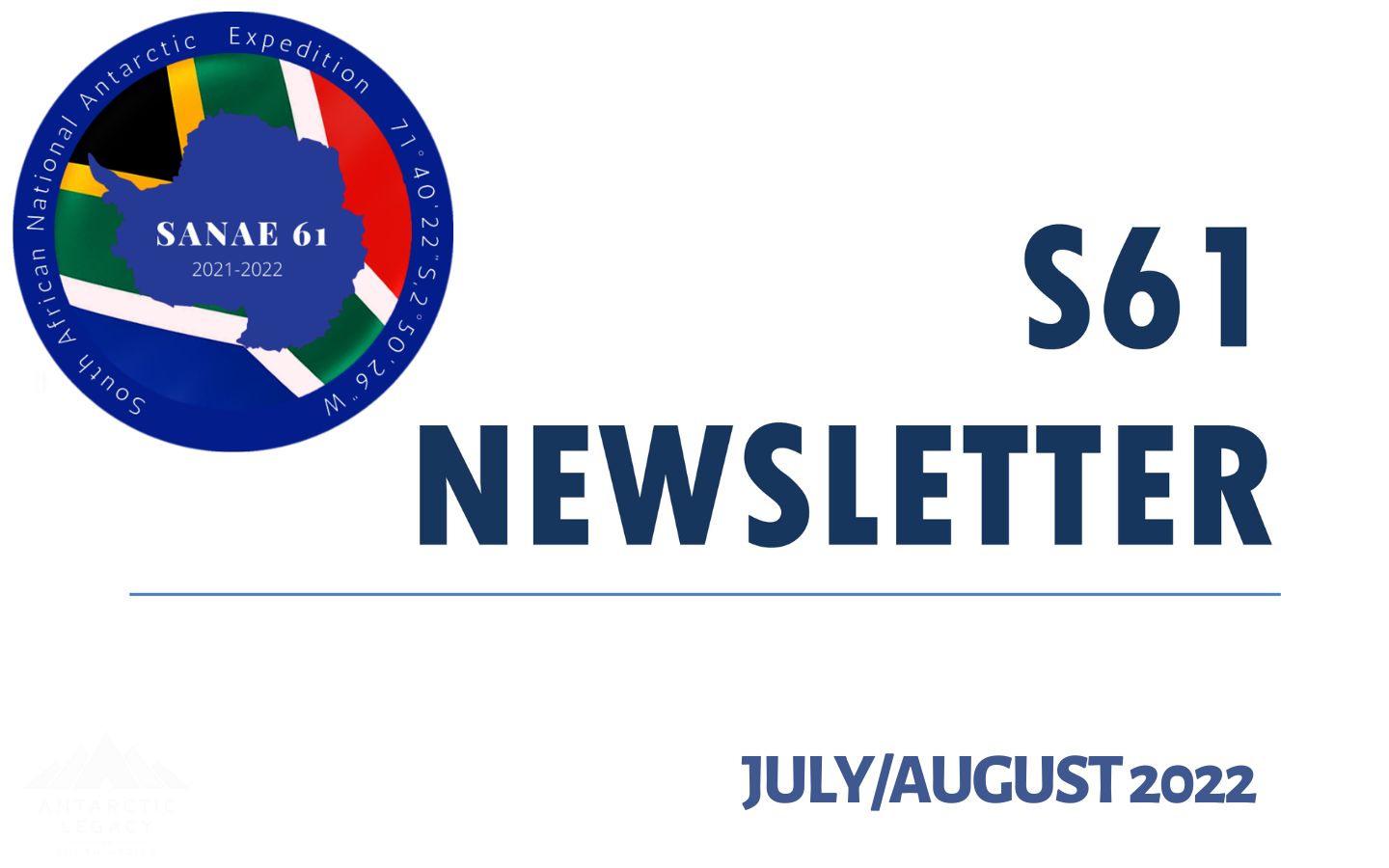

In this edition:
- Get to know the team’s medical doctor and team leader, JC Laubscher
- Find out more about his work at SANAE IV as a medical doctor.
- He speaks about his Antarctic journey, expectations vs reality of Antarctica and much more.
“ I think that’s the allure of this place for me – it’s that cocktail of danger, beauty, violent temperament and tranquil majesty all rolled into one”.
July/August Birthdays
Click here to view all the newsletters SANAE 61 has published to this date.
Anche Louw, Antarctic Legacy of South Africa, 12 October 2022
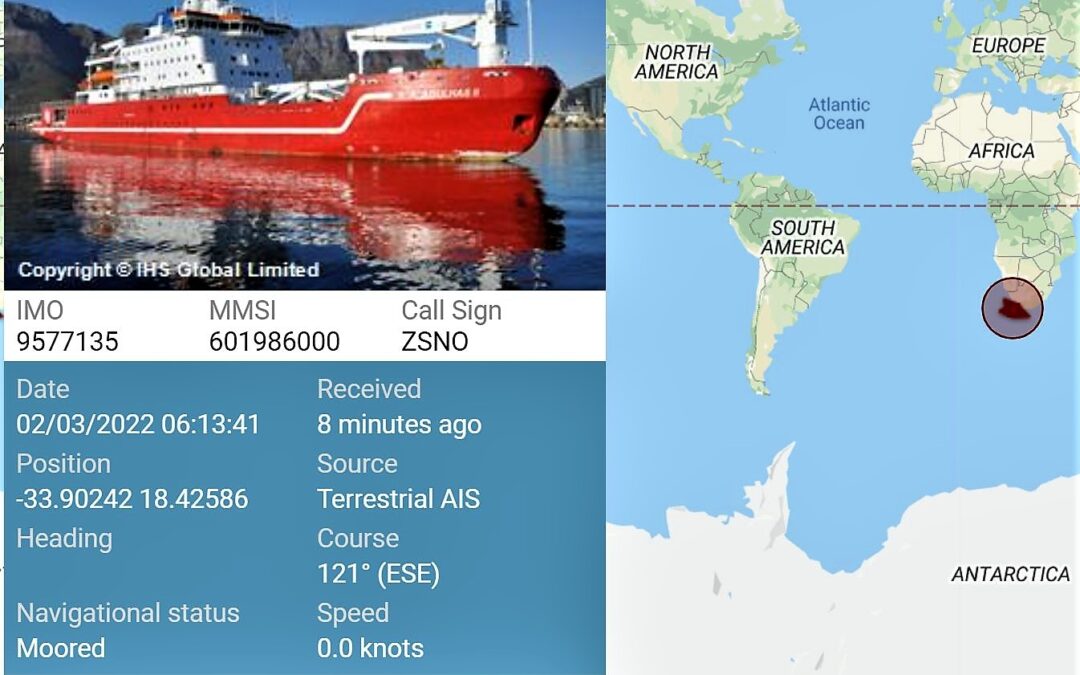
by Ria Olivier | Feb 3, 2022 | Not-Assigned, Uncategorised

Sir Ernest Shackleton.
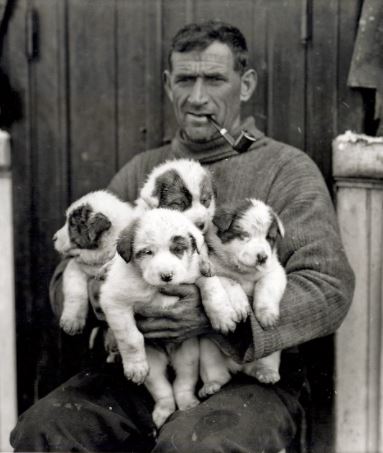
Tom Crean with puppies.
The year is 1914, with the imminent threat of World War I, Sir Ernest Shackleton was on the cusp of embarking on a journey to the uncharted South Ocean and treacherous Antarctic region. Upon learning about the mobilization of troops, supplies and volunteer soldiers, Shackleton offered up his ship the “Endurance”, men, and services in the event of war breaking out. He was initially given the “Proceed” command from the Admiralty office, however soon after received a telegram from Winston Churchill thanking him for the offer but would prefer that they proceed with the expedition.
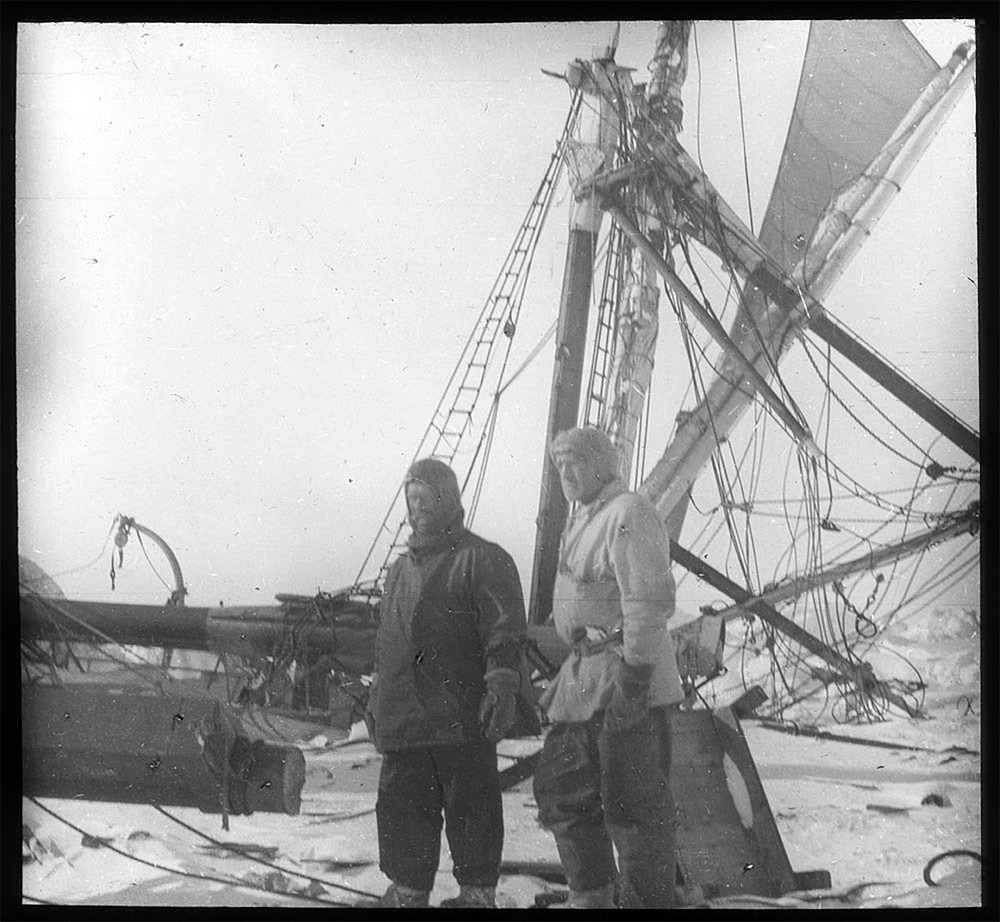
Sir Ernest Shackleton and Frank Wild with the crush “Endurance”.
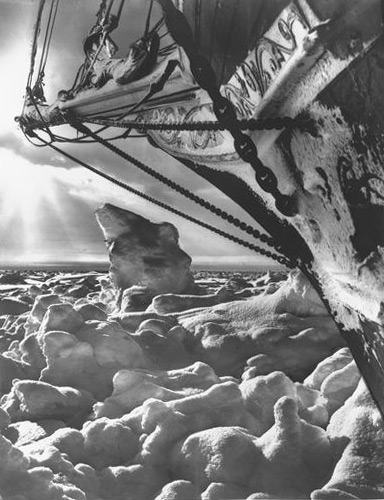
The “Endurance”
Thus, giving birth to one of history’s most epic expeditions, tale of bravery, resilience and spirit of adventure. The “Endurance” set sail for South Georgia, where it was stocked, and preparations made for the harrowing journey into the uncharted Weddell Sea. Unfortunately, the “Endurance” was met with an unforgiving sea and severe ice conditions which soon caused the untimely demise of the expedition and eventual loss of the vessel, beneath the frozen tundra. Although the ship was lost to the sea, the spirit of survival and unshakeable brotherhood of the “Endurance” crew is a timeless tale echoed throughout history. Shackleton’s efforts in rescuing his men and safe return of every crew member remains a remarkable story never to be forgotten and has paved the way for future intrepid explorers.
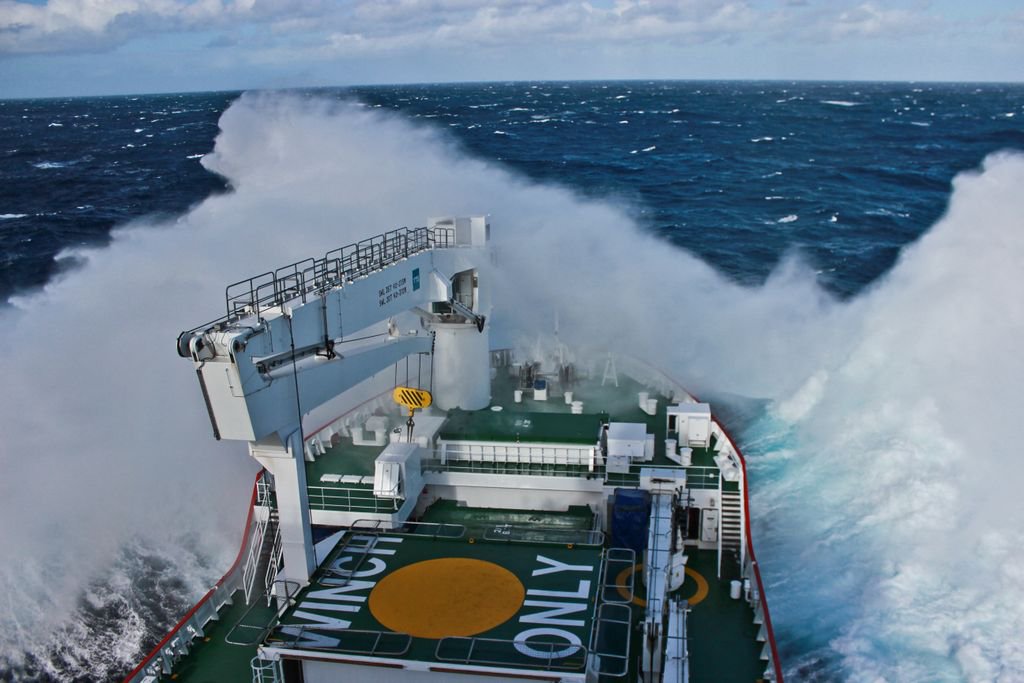
SA Agulhas II sailing bow-slamming in the Southern Ocean. Photograph: Marcel du Plessis
Fast forward 104 years, in February 2019, the S.A. Agulhas II set out to make the first attempt (Weddell Sea Expedition 2019) in reaching the last known sinking site of the “Endurance” with the hopes of uncovering the wreck. The expedition was successful in that the vessel, along with its ambitious expedition team reached the sinking site and conducted a plethora of oceanographic operations. Unfortunately, the search for the “Endurance” was abandoned due to the technical difficulties and subsequent loss of oceanographic equipment. The expedition team and S.A .Agulhas II crew faced treacherous seas and extreme ice conditions, indicative of the Weddell Sea. Thus, serving as firm reminder of the unforgiving nature of the Southern Ocean, but with that said the Weddell Sea Expedition team (Endurance 22) returns with renewed hopes in discovering Shackleton’s lost “Endurance”.
 Coverage and updates of Endurance 22 Expedition will be covered by and ALSA via social media channels (Twitter, Facebook and Instagram). There is also an amazing opportunity for schools to engage and gain wonderful insight into the voyage through a virtual classroom made possible by “Reach the World” foundation. Register here: https://bit.ly/3HtS8jK
Coverage and updates of Endurance 22 Expedition will be covered by and ALSA via social media channels (Twitter, Facebook and Instagram). There is also an amazing opportunity for schools to engage and gain wonderful insight into the voyage through a virtual classroom made possible by “Reach the World” foundation. Register here: https://bit.ly/3HtS8jK
Reach the World, in partnership with the Falklands Maritime Heritage Trust will be the largest virtual exchange expedition in organisational history! Real-time articles, video content from explorers and scientists will be made available as well as communication from Endurance 22 participants throughout the voyage. A number of classroom subjects will be addressed such as STEM, Social Studies, English Language Arts (ELA), and Social-Emotional Learning (SEL)
Learn more and register at explore.reachtheworld.org
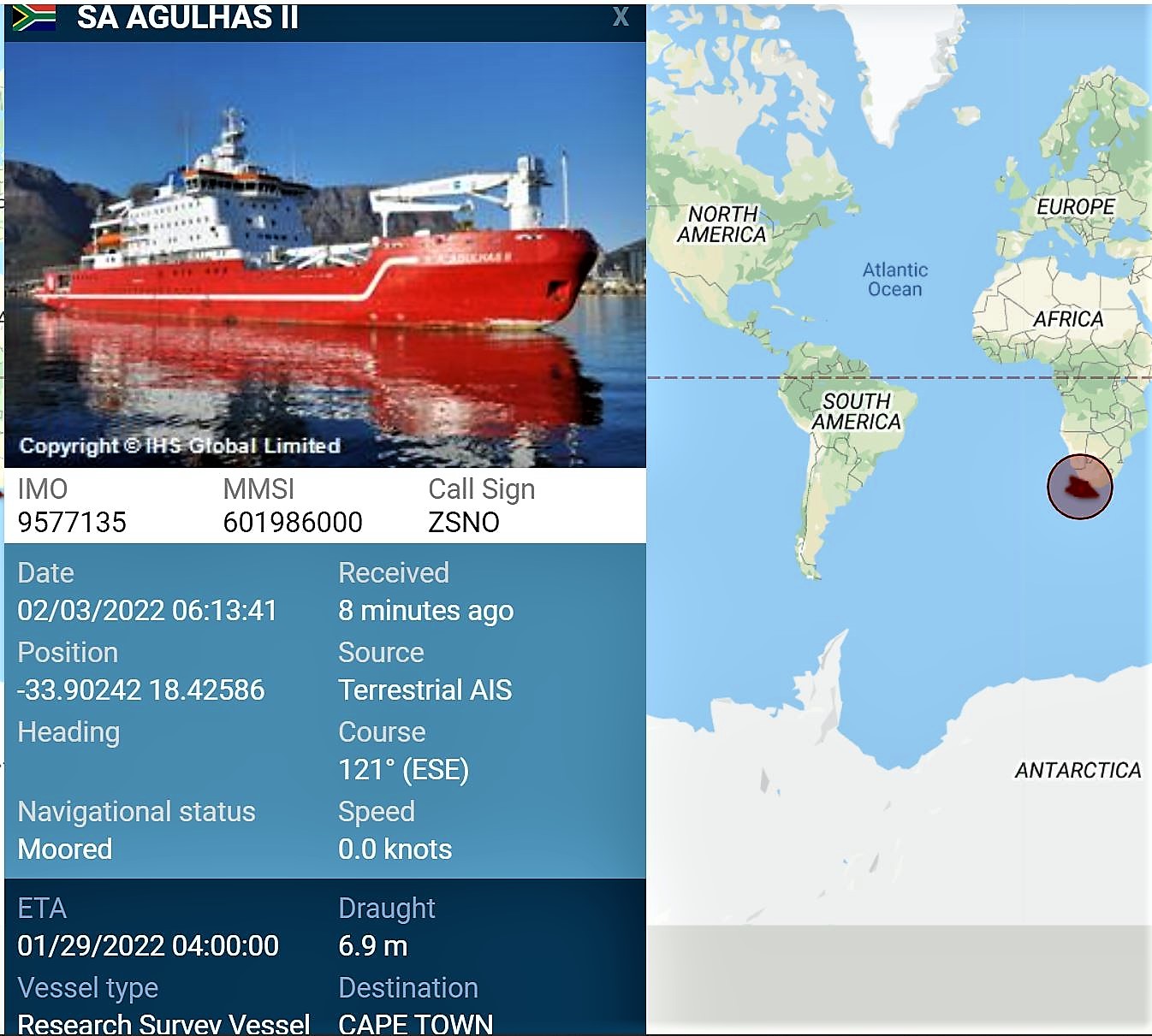 Track the S.A. Agulhas II during the Endurance22 Expedition with Captain Knowledge Bengu in the bridge and Freddie Ligthelm as Ice pilot.
Track the S.A. Agulhas II during the Endurance22 Expedition with Captain Knowledge Bengu in the bridge and Freddie Ligthelm as Ice pilot.

Ice-Core and UCT Team of Weddell Sea Expedition 2019. Photograph: Tamara Stubbs
Image above and below taken during the Endurance Expedition in 2019
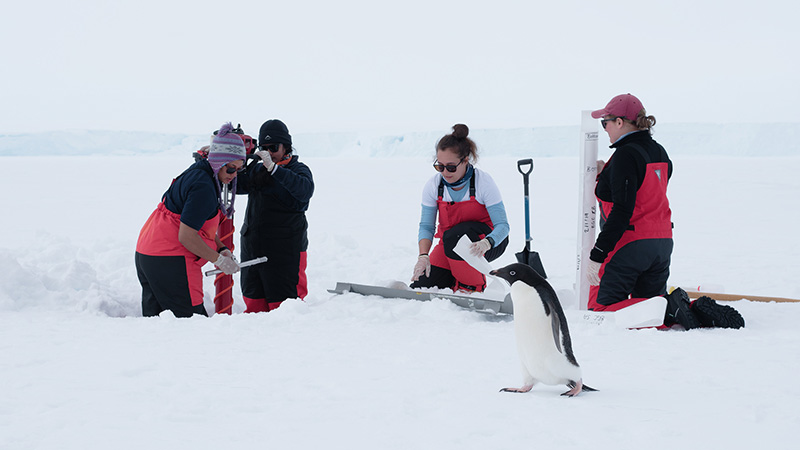
UCT scientists conducting ice core work during WSE 2019. Photograph: Hermann Luyt
“Sir Ernest Shackleton’s name will for evermore be engraved with letters of fire in the history of Antarctic exploration.” – Roald Amundsen
Images from Sir Ernest Shackleton obtained from : https://www.coolantarctica.com. A great source that can be used in the classroom.
Tahlia Henry, Antarctic Legacy of South Africa, 03 February 2022

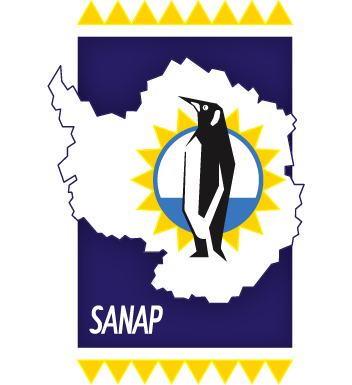





 The COVID pandemic change the conference environment. Since the last SCHASS in 2019 in Argentina the Social Sciences and Humanities community had online meetings and discussions and activities within this discipline carried on. Attending an in-person meeting made me once again realise that we are human beings, and we need human contact. It was great to meet with colleagues that I have become friends over the past years, it felt like a family reunion. The great networking that takes place outside of the presentations cannot be substitute by online symposia and conferences. It is great to be part of this standing committee of SCAR and its activities. The chance to further data management in the social sciences and humanities is always important – Ria Olivier (Principal Investigator and digital archivist of Antarctic Legacy of South Africa (
The COVID pandemic change the conference environment. Since the last SCHASS in 2019 in Argentina the Social Sciences and Humanities community had online meetings and discussions and activities within this discipline carried on. Attending an in-person meeting made me once again realise that we are human beings, and we need human contact. It was great to meet with colleagues that I have become friends over the past years, it felt like a family reunion. The great networking that takes place outside of the presentations cannot be substitute by online symposia and conferences. It is great to be part of this standing committee of SCAR and its activities. The chance to further data management in the social sciences and humanities is always important – Ria Olivier (Principal Investigator and digital archivist of Antarctic Legacy of South Africa ( Conference closing ceremony: a performance by a university student musical band. We thank the organisers that delegates part of the SA National Antarctic Programme could attend this conference.
Conference closing ceremony: a performance by a university student musical band. We thank the organisers that delegates part of the SA National Antarctic Programme could attend this conference.
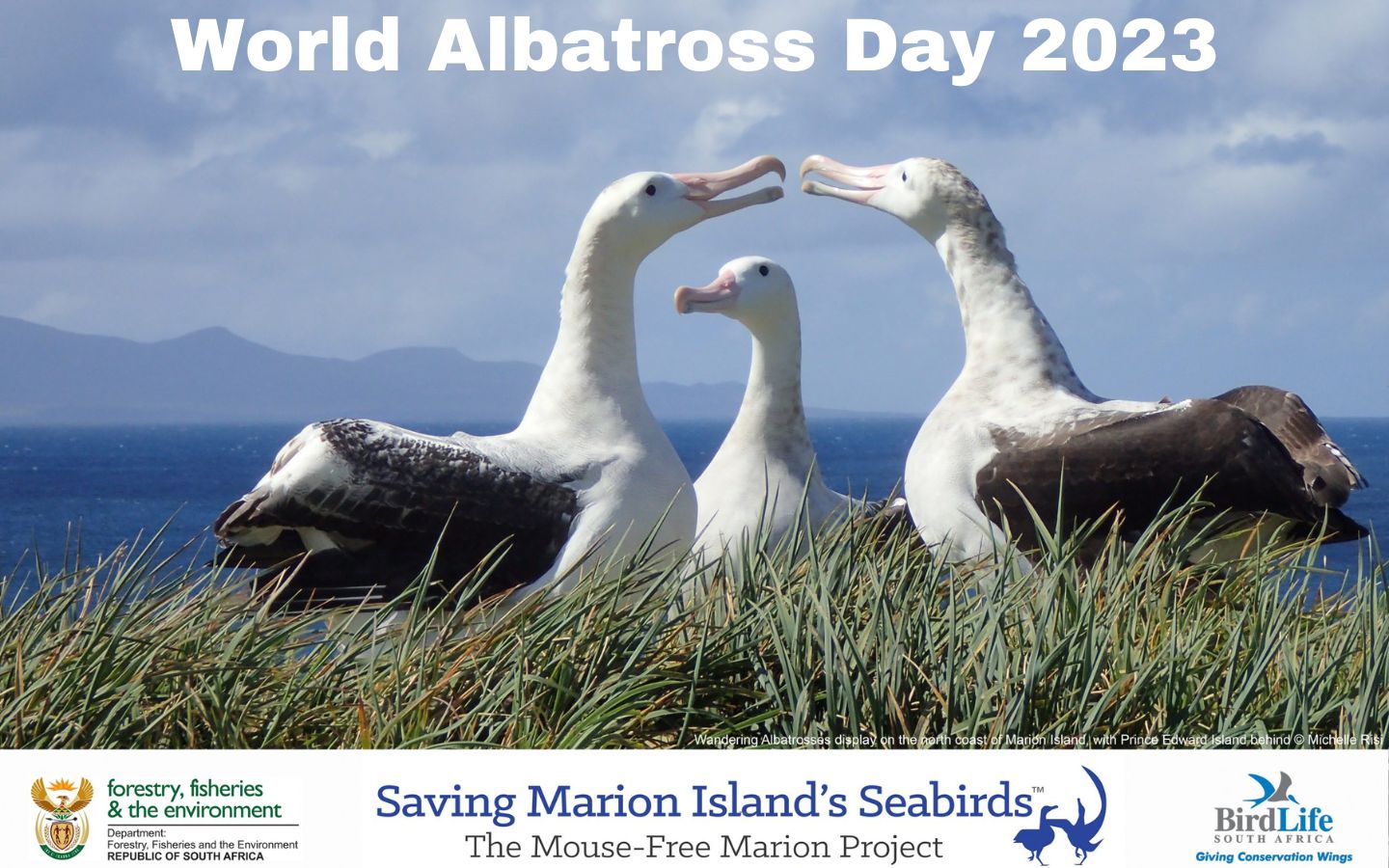
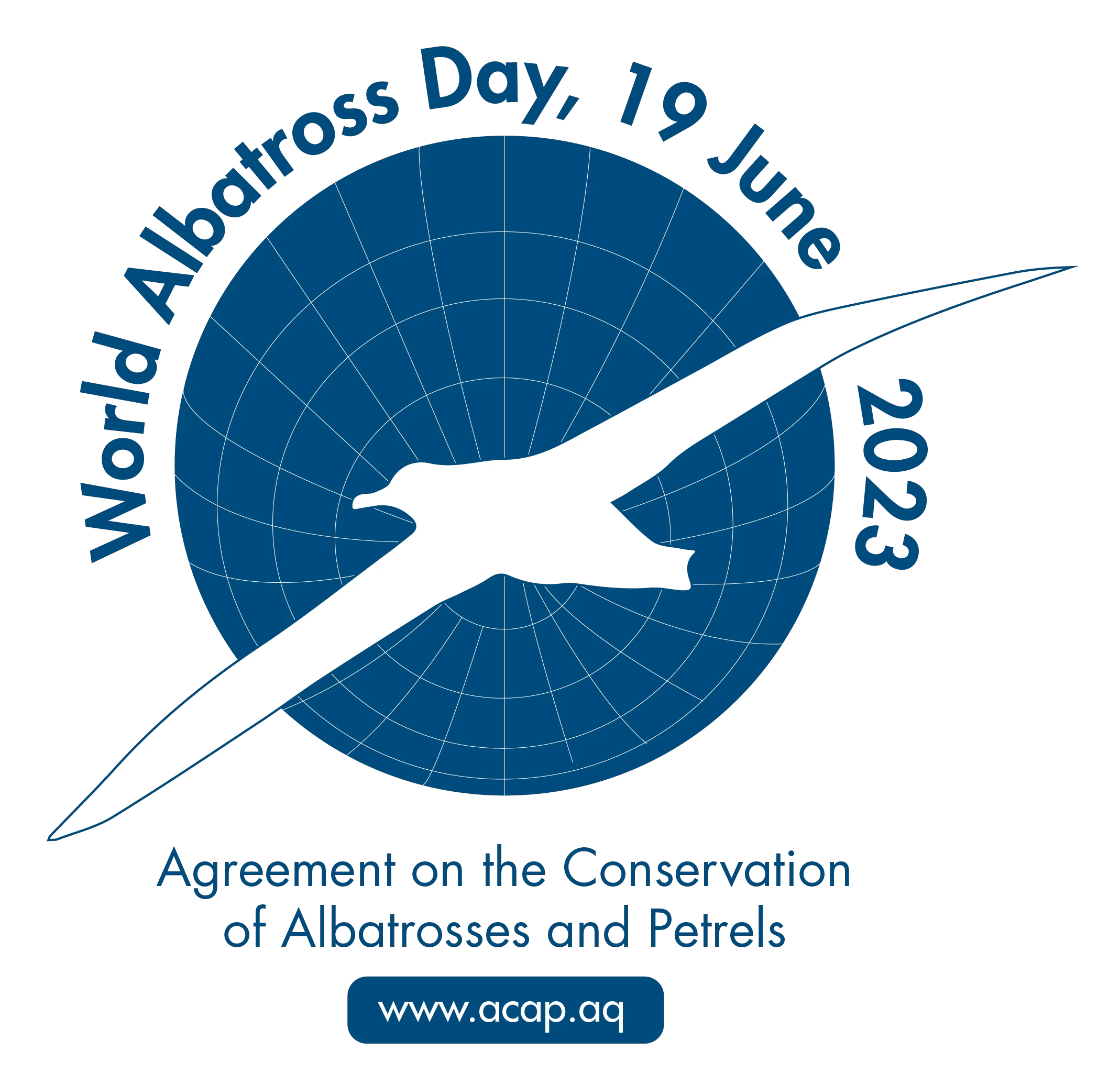
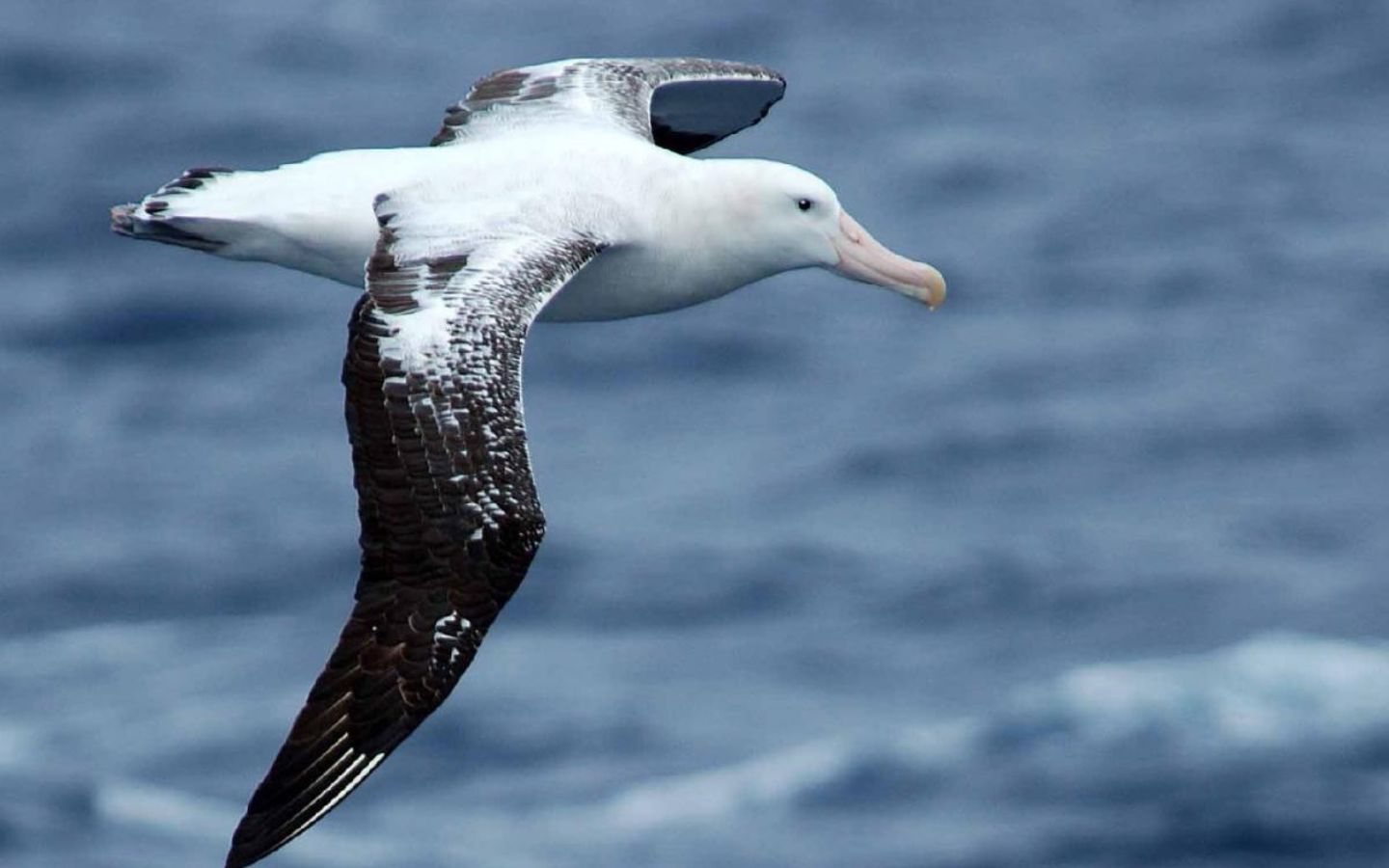









 Coverage and updates of Endurance 22 Expedition will be covered by and ALSA via social media channels (Twitter, Facebook and Instagram). There is also an amazing opportunity for schools to engage and gain wonderful insight into the voyage through a virtual classroom made possible by
Coverage and updates of Endurance 22 Expedition will be covered by and ALSA via social media channels (Twitter, Facebook and Instagram). There is also an amazing opportunity for schools to engage and gain wonderful insight into the voyage through a virtual classroom made possible by 



